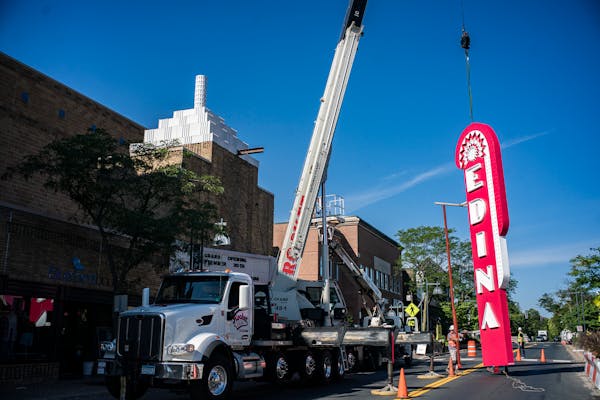Most parcels of land in downtown Minneapolis and St. Paul have hosted a wide variety of structures over the years, from simple wood-framed houses to mansions to small commercial buildings to today's crop of skyscrapers.
But the corner of W. 5th and St. Peter streets in St. Paul is highly unusual because it's been devoted to the same use for more than 150 years. Since 1910, the St. Paul Hotel has anchored the corner, but it was preceded by two other hotels, both of which have interesting histories of their own.
The first hotel on the site, which became known as the Greenman, is poorly documented, but it appears that it opened in the 1860s as a boarding house owned by a carpenter-turned-builder named John Summers.
The Scottish-born Summers arrived in St. Paul in 1856 and maintained a carpenter shop before branching into the lodging business. One historian described him as "an excellent specimen of a self-made man" with "somewhat angular points of character," which suggests Summers was a Scotsman of the decidedly flinty sort.
In about 1871, Summers enlarged his boarding house into the 60-room Greenman, named after its first manager, S.P. Greenman. The three-story, wood-frame structure, which offered a mere wisp of Greek Revival styling, wrapped around the angled corner of W. 5th and St. Peter — just as the St. Paul Hotel does today.
Summers, who acted as his own architect, added another 70 rooms to the hotel in 1874, making it, according to the St. Paul Daily Press, among the most "desirable and popular establishments of its kind."
Advertising itself as "the best two-dollar house in the city," the Greenman offered bathrooms with hot and cold running water, a welcome amenity at the time. It's unlikely, however, that any of the rooms featured private baths, which did not become standard in most hotels until the early 1900s.
Alas, the Greenman had one dangerous deficiency: In the pre-electric age of gas lighting and candles (along with plenty of burning cigars), wood-frame hotels were essentially kindling. Downtown St. Paul alone saw at least eight hotels burn down before 1880.
The Greenman's date with disaster came on May 7, 1877, when a fire that began in an outbuilding quickly spread to the hotel. A desk clerk managed to sound the alarm, racing down the halls and knocking on doors. Everyone made it out safely, although there were some close calls.
Summers rebuilt at once, only this time in more fire-resistant brick. His new hotel, known as the Windsor, opened in 1878 and was expanded just three years later. In its final iteration, the four-story, Italianate-style hotel was no great architectural gem, but it did offer balconies for guests, along with the two restaurants, a café, a bar and a billiards hall.
The Windsor also included separate family apartments along St. Peter Street in a trio of three-story townhouses with their own entries. These townhouses, also built by Summers, may have predated the hotel.
Good descriptions of long-gone buildings can be hard to come by, but at least one writer left behind a colorful account of the Windsor in its heyday. Alice Monfort Dunn, Summers' daughter, lived at the hotel in the 1880s. In a 1952 article for Minnesota History magazine, she wrote of the many noted people who frequented the Windsor.
One of them was Hamlin Garland, whose stark novels and stories about the rigors of farm life in his native Wisconsin won him a Pulitzer Prize for autobiography. Another of the hotel's literary habitués was Ignatius Donnelly, a populist politician-turned-writer whose 1882 potboiler "Atlantis: The Antediluvian World" (which I confess having read in my idle youth) is still in print.
Still another notable guest was Richard Mansfield, a celebrated English actor of the time. Mansfield, who traveled in style, would engage an entire wing of the hotel during his stays. Dunn found that the great thespian could be "arrogant and dictatorial" but "very nice when he was pleased."
According to Dunn, local and state politicians of all stripes hung out at the Windsor, and one of her best, if possibly embellished, stories concerns an unnamed legislator.
"Once I heard a man trying to bribe a senator," Dunn wrote. "In an apparent burst of indignation, Mr. Senator said in a stentorian voice, 'Sir, how dare you insult me. I am an honest man,' and then almost in a whisper, unaware of the little girl standing behind a pillar, he remarked, 'My coat is hanging in the lobby; you can put the money in the pocket.' "
While not engaged in the ancient art of skullduggery, the politicians who flocked to the Windsor in the 1880s could enjoy a full-course dinner, with a decanter of wine, all for a mere 75 cents in an atmosphere Dunn described as "cheerful, cozy and happy."
Despite its many appealing qualities, the Windsor had a relatively short life. By the time Dunn lived there, it had already been eclipsed by the much larger and more luxurious Ryan Hotel, built in 1885 at 6th and Robert streets.
Even so, the Windsor soldiered on as a comfortable second-tier hotel until the early 1900s. It closed for good by 1905 and was finally torn down in 1908 to make way for the St. Paul Hotel, which opened two years later.
Larry Millett is an architecture critic and author. He can be reached at larrymillett.com.








